10 Comics in Celebration of 45 Years of Alien
Posted on May 24, 2024
by Eric S
A darker, more gruesome, and, frankly, more pessimistic counterpoint to Star Wars, the first Alien film was released 45 years ago this week to impressive box numbers and somewhat mixed reviews. In the almost five decades since hitting the big screen, Alien’s status has only continued to rise, not only joining the annals of sci-fi and horror movie history—and movie history in general, for that matter. By taking the “final girl” trope as seen in films like Halloween and The Texas Chainsaw Massacre, subverting it, and transposing it onto a bleak sci-fi setting that is both futuristic and familiar, Alien gave us a feminist icon in the form of Sigourney Weaver’s Ellen Ripley, whose intelligence and assertiveness in the face of a deadly xenomorph threat have inspired countless films, video games, books, and more. Of course, the series would continue on over the next few decades, ranging from masterpieces to major disappointments to misunderstood art films to feature-length contemplations on robots and God, with some so-so Predator crossovers in between. But where do you go when you need more xenomorph action? While the movies will likely always be the definitive Alien texts for most fans, there’s a long history of comics spanning as far back as the first film. Like the movies, the Alien and Aliens comic books are a wildly mixed bag of stories. Some feature beloved heroes like Ripley, but most expand beyond the familiar characters of the films and tell new tales with the alien threat. We’ve gone through almost a half-century of those xenomorph-laden comics and graphic novels to bring you some of the best—both hidden gems and beloved classics. If the films aren’t enough Alien for you, these books are must-reads!
For more great comics, make sure to check out the offerings of your local branch as well as the Hoopla app.
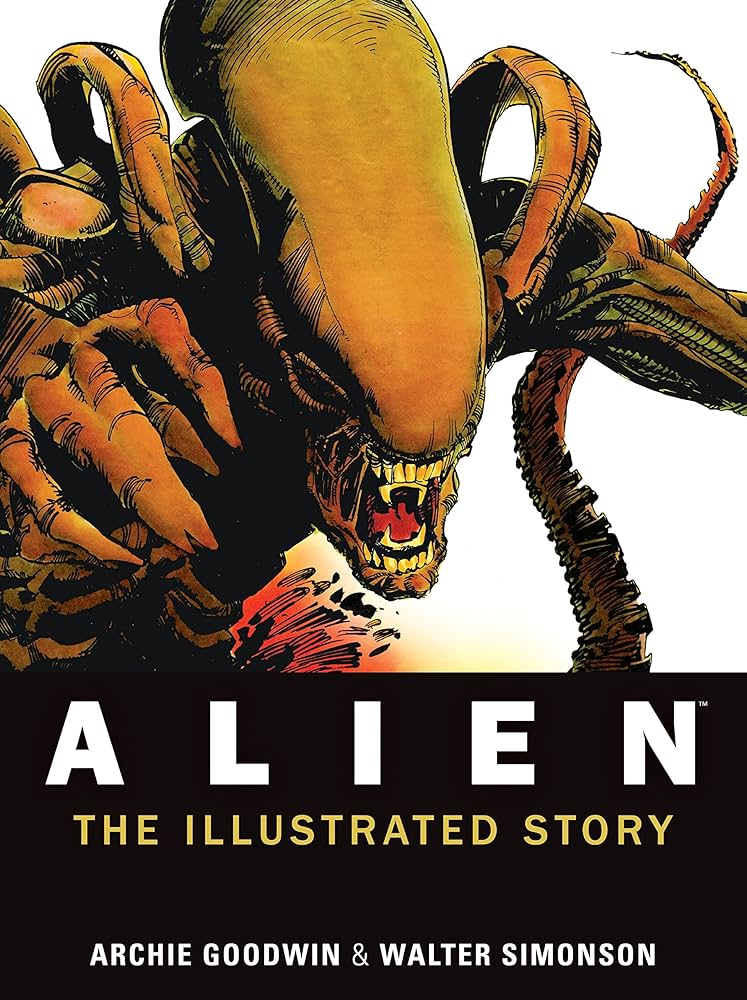
Alien: The Illustrated Story
Published by Heavy Metal magazine the same year Alien was released, 1979's Alien: The Illustrated Story is notable for being the very first Alien comic. Written by Archie Goodwin and drawn by Walter Simonson (both comic legends in their own right), The Illustrated Story is a rather faithful, well-executed adaptation of the first movie. It's a short read, but it's worth taking the time to really soak in Simonson's delightfully angular art, which seems to work just as well with the world of Alien as it does with his superhero books, like Thor and X-Factor. Whether you're a longtime fan or have never read an Alien comic book in your life, The Illustrated Story is an accessible and intriguing version of one of the most iconic stories in sci-fi/horror history.

Aliens: The Original Comics Series
Also known as Aliens: Outbreak, this aggressively weird yet ambitious comic by prolific writer/TV producer Mark Verheiden (seriously, this guy’s sci-fi pedigree is impressive) is essential reading for every fan looking to take the plunge into the world of Alien(s) comics. A major selling point of this comic is that it continues the story of Aliens in a totally different way than Alien3 (printings released after Alien3 would change character names as to not contradict the film, but the original is the version you want to read first). Like many early Alien(s) comics, this mini-series is not the most coherent story ever written, but it touches on themes of trauma, televangelism, and militarism in a way that does not feel out of place in the Alien universe. This comic would get direct sequels in the form of the enjoyable but much more straightforward, back-to-basics Nightmare Asylum and Earth War that are also worth checking out. Did I mention this comic ignores Alien3?
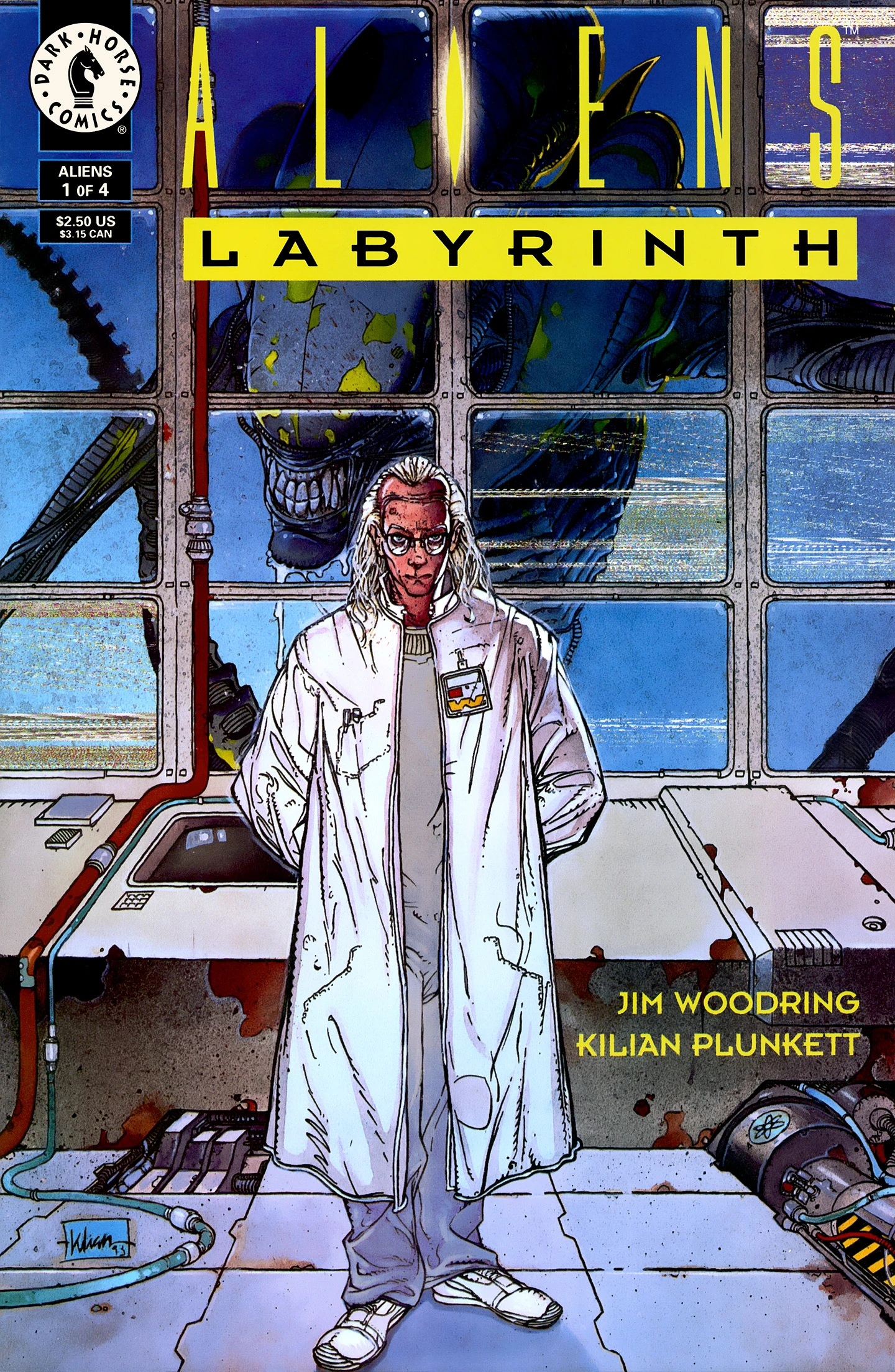
Aliens: Labyrinth
Originally released as a four-issue mini-series, Aliens: Labyrinth is an incredibly unsettling comic book. At the center of Labyrinth's creepiness is Dr. Church, who is just a little bit too fascinated by alien behavior. The great thing about Labyrinth is that it finds new themes within the familiar framework of "science without morals is bad." The massively underrated artist Kilian Plunkett certainly adds to the terror, especially in a flashback scene in issue #3, in which the reader is invited into a xenomorph hive. Unlike many Alien(s) artists who revel in shadows and silhouettes, Plunket brings an intricacy and clarity of linework to the xenomorphs that is somehow just as unsettling as when the creatures are shrouded in darkness.
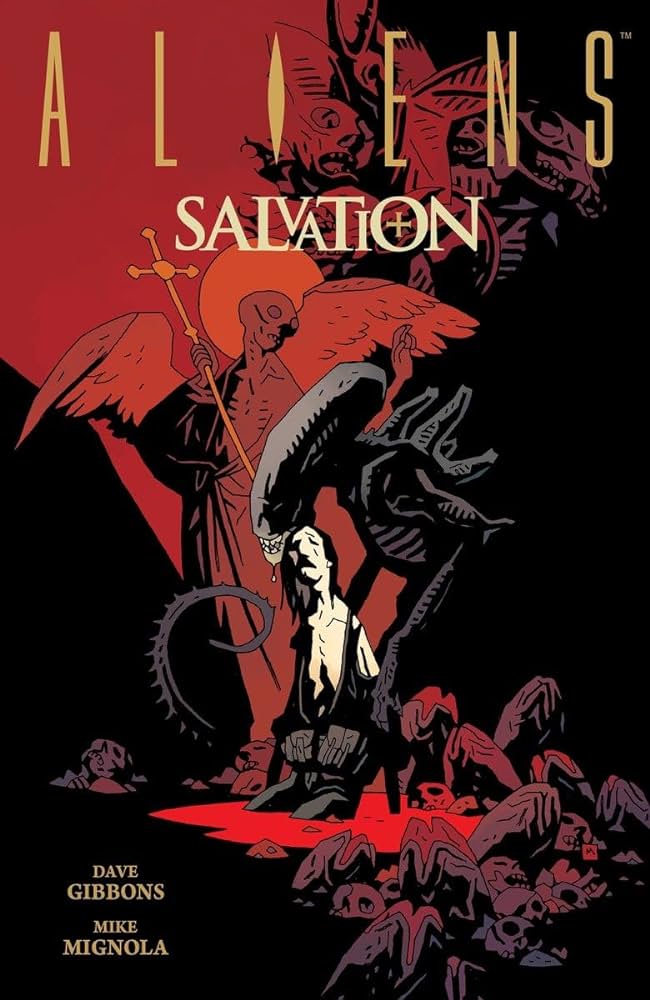
Aliens: Salvation
Neither the first nor the last Alien(s) comic to deal with xenomorphs through the lens of religion, Salvation takes some of the implications of Aliens: Outbreak (and the deleted scenes and subplots of Alien3, if you want to do a really deep dive) and explores them in a much more overt way. When a God-fearing chef named Selkirk crash lands on a small planet, he discovers that his ship’s cargo is, well, concerning, to say the least. While many talented creators have worked on Alien(s) comics over the years, Salvation features some uncharacteristically huge names in the form of writer Dave Gibbons (the artist and co-creator of Watchmen), penciller Mike Mignola (the creator of Hellboy), and inker Kevin Nowlan, who is no stranger to Alien(s) comics (check out his Superman/Aliens–it’s surprisingly decent). One of the standouts from the early years of Alien books, Salvation is a quickly-paced comic that will stick with you long after you read the last page.

Aliens Versus Predator: The Original Comic Series
Not to be confused with the similarly named mediocre movies, excellent toyline, or countless video games, the first AvP comic is not only one of the best crossover comics of the ‘90s (which isn’t really saying much) but would introduce a lot of ideas for future stories in both the Alien and Predator universes (the 2009 film, Predators, for example, actually takes quite a bit of inspiration from this book). As you might expect, Aliens Versus Predator is not a nuanced examination of the human condition, but it is an exciting and shockingly well-crafted comic featuring two of the premier creatures of science fiction. But above all, Aliens Versus Predator teaches some life lessons we all need to learn, like the importance of not colonizing a planet to raise cattle when that planet happens to be a traditional hunting ground for Predators.

Alien Vol. 2: Revival
Some fans were understandably concerned when Disney acquired the rights to Alien, but the House of Mouse has continued the familiar trend of releasing Alien comics of wildly inconsistent quality. However, as with Alien's previous publisher, Dark Horse, there are some worthwhile reads, like the second story arc of Marvel/Disney's first foray into the world of xenomorphs. Revival tells the story of a religious group on a distant planet that (you've guessed it) is terrorized by some aliens. However, secrets are revealed about the group that could totally shake their foundation. Will they escape the xenomorph threat? Will they ever be the same? Check it out in this tense book that checks almost all the right Alien boxes. If you like this one, check out the volume that preceded it and the one that followed it—along with the other comics by Marvel.

Aliens: Genocide
Part of the beauty of Alien as a horror franchise is its tendency to leave questions unanswered, forcing the viewer/reader to grapple with the mystery surrounding the xenomorphs, their lifecycle, their homeworld, etc. Of course, inconsistencies between movies when it comes to the aliens certainly do not help clear up any of the mysteries. I wholeheartedly support the films’ refusal to over-clarify, but after a certain point, you’ll probably ask, “What is the deal with these creatures?” And that’s where Aliens: Genocide comes in. Written by Mike Richardson, the founder of Dark Horse Comics, Genocide is the first Alien(s) comic to move beyond the characters of the films. It depicts billionaire Daniel Grant, who ventures to the xenomorph homeworld, appropriately known as Xenomorph Prime (also G-435, Achilles 2.4, or Hiveworld, among other things), but it’s really the aliens who are the stars. We get a glimpse into a xenomorph civil war between the traditional black and newly-introduced red creatures. We get to see where aliens come from. We also learn more about their biology. It’s an interesting read for anyone who’s ever wanted a deeper dive into the aliens themselves, as opposed to the humans they torment.

Aliens: Female War
In the same line of continuity as Verheiden's previous comics (Outbreak, Nightmare Asylum, and Earth War), Female War is the last Alien(s) comic to feature movie characters before Alien3 would totally change the canon. Newt and Hicks (or Billie and Wilkes, if you're reading later printings) are trying to stop the xenomorph menace, but things are not looking good: the aliens have completely occupied Earth (I hate when that happens). This time, they're joined by the iconic Ellen Ripley, who has surprisingly few comic book appearances (outside of the mini-comics that came with the early '90s action figures, of course). Ripley's plan is pretty wild: capture the "Mother Queen" (which I guess is bigger and more important than a regular queen alien) from the xenomorph homeworld, bring it to Earth so it can lure all aliens to one place, then blow them all up. Hope you thought this through, Rip. Female War is nothing groundbreaking, but it's a solid Alien(s) comic and a welcome reunion between Ripley and Hicks, Newt, and, of course, a queen alien.
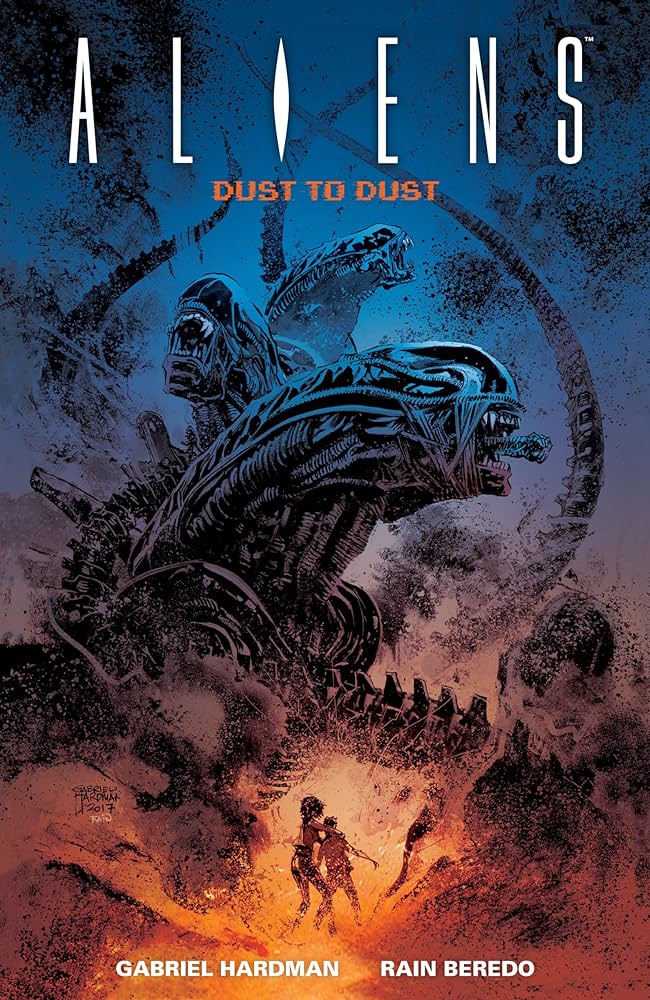
Aliens: Dust to Dust
Aliens: Dust to Dust is a back-to-basics Alien(s) comic that harkens back to the creepiness and intensity of the first two films. Which is to say, it is fantastic. Written and drawn by the underrated Gabriel Hardman, Dust to Dust is difficult to discuss in too much detail without giving away spoilers, but it has the classic "race against the clock" premise that makes the best Alien films so stressful (in a good way). The story focuses on Maxon, a 12-year-old who must find his way to an escape shuttle after his colony faces a xenomorph outbreak. What the premise lacks in originality, it makes up for in pacing and execution, as Maxon's journey through alien-infested areas will leave you on the edge of your seat. Particularly fascinating is his unusual relationship with a particular one-armed xenomorph that follows him and may or may not be more than the average mindless alien drone. Dust to Dust does what the best Alien comics do (and really what the best of any spin-off or supplemental narrative from a beloved franchise does) in that it adds some new ideas without deviating too far from the core of the series.
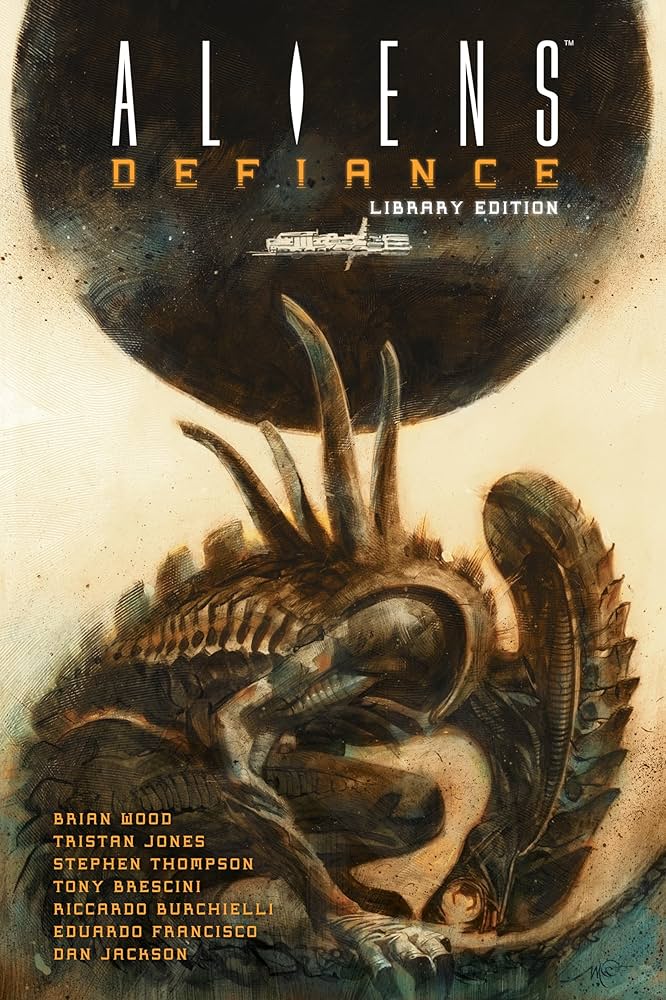
Aliens: Defiance
As great as Alien is, if the comics are any indication (with their short, 3 or 4-issue mini-series), it doesn’t seem to lend itself to lengthy or even ongoing stories. But Defiance, currently the longest Alien comic ever written, makes a strong attempt to push back on that with a solid 12 issues and multiple sequels—one of which even ties into the video game, Alien: Isolation—arguably the scariest game ever made. When Private Zula Hendricks of the Colonial Marines learns the truth about her mission (spoiler: it involves using aliens for horrible things), she teams up with the android named Davis and decides to get proactive about the xenomorph threat. Tristan Jones’ art is eerie and evokes a realism that puts you into a living, breathing world of Aliens, in which you can almost feel the grime of the spaceships and the slime of the creatures. Overall, Defiance is an excellent balance between horror and action, and is a must-read if, like me, Aliens is your favorite film of the series.
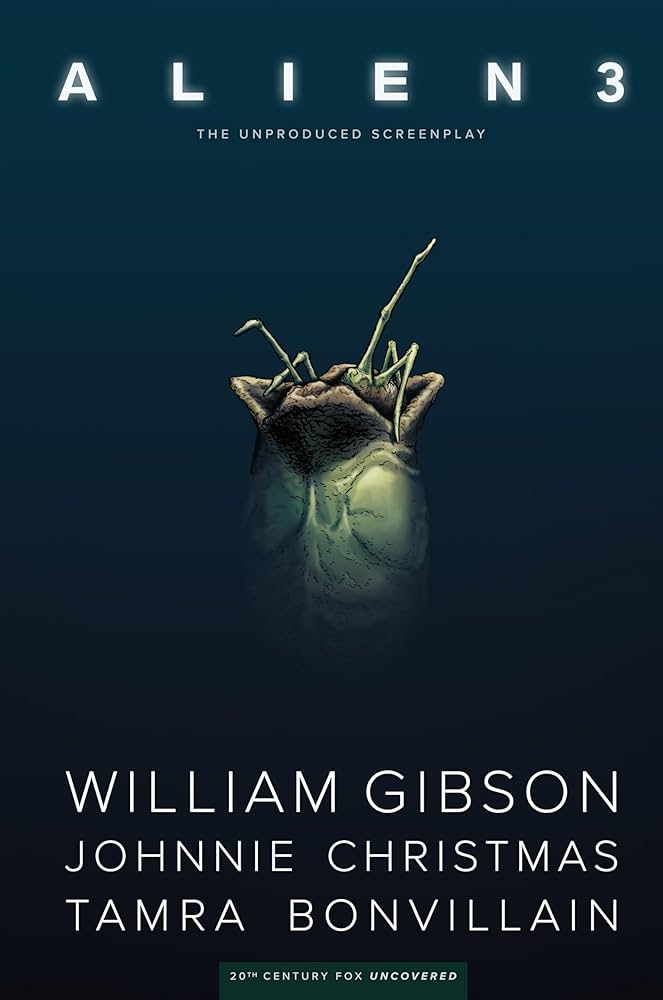
Honorable Mention: William Gibson’s Alien3: The Unproduced Screenplay
While some would argue that Alejandro Jodorowsky’s version of Dune is the greatest science fiction film never made, Alien fans know that it’s really Alien3 by acclaimed cyberpunk author, William Gibson. While the film we got was plagued by production issues, re-writes, and tension between director David Fincher and the studio (not to mention its pessimistic story and disregard for beloved established characters), Gibson’s script offered something that was perhaps a little more in line with what fans of the previous film expected. Although the actual script has been floating around the internet for decades, we would eventually get a comic book adaptation by Johnnie Christmas. While it isn’t Christmas’ best work, this version of Alien3 is still a fascinating read that requires no prior knowledge of Alien comics. It’s worth pointing out that, like Aliens: The Original Comic Series, William Gibson’s Alien3 does not kill off some fan-favorite heroes, and in fact makes them central to the plot. While the perfect sequel to Aliens has yet to be made (although the scrapped Aliens sequel by Neill Blomkamp looked REALLY cool), this adaptation is, well…something to hold you over. Unless you can learn to look past its flaws and love Alien3.
Did you like this blog post? Keep up to date with all of our posts by subscribing to the Library’s newsletters!
Keep your reading list updated with our book lists. Our staff love to read and they’ll give you the scoop on new tv-series inspired titles, hobbies, educational resources, pop culture, current events, and more!
Looking for more great titles? Get personalized recommendations from our librarians with this simple form.

